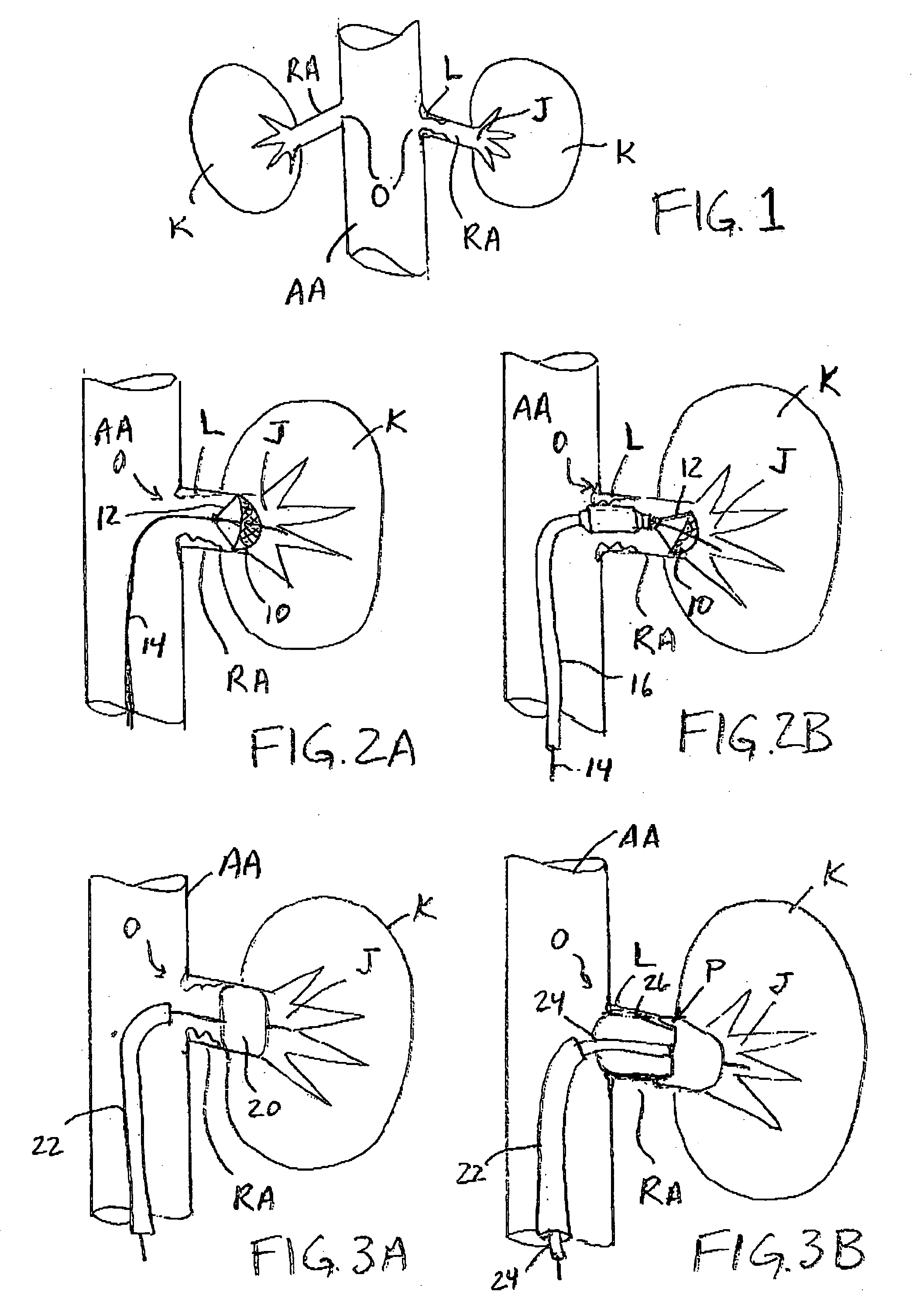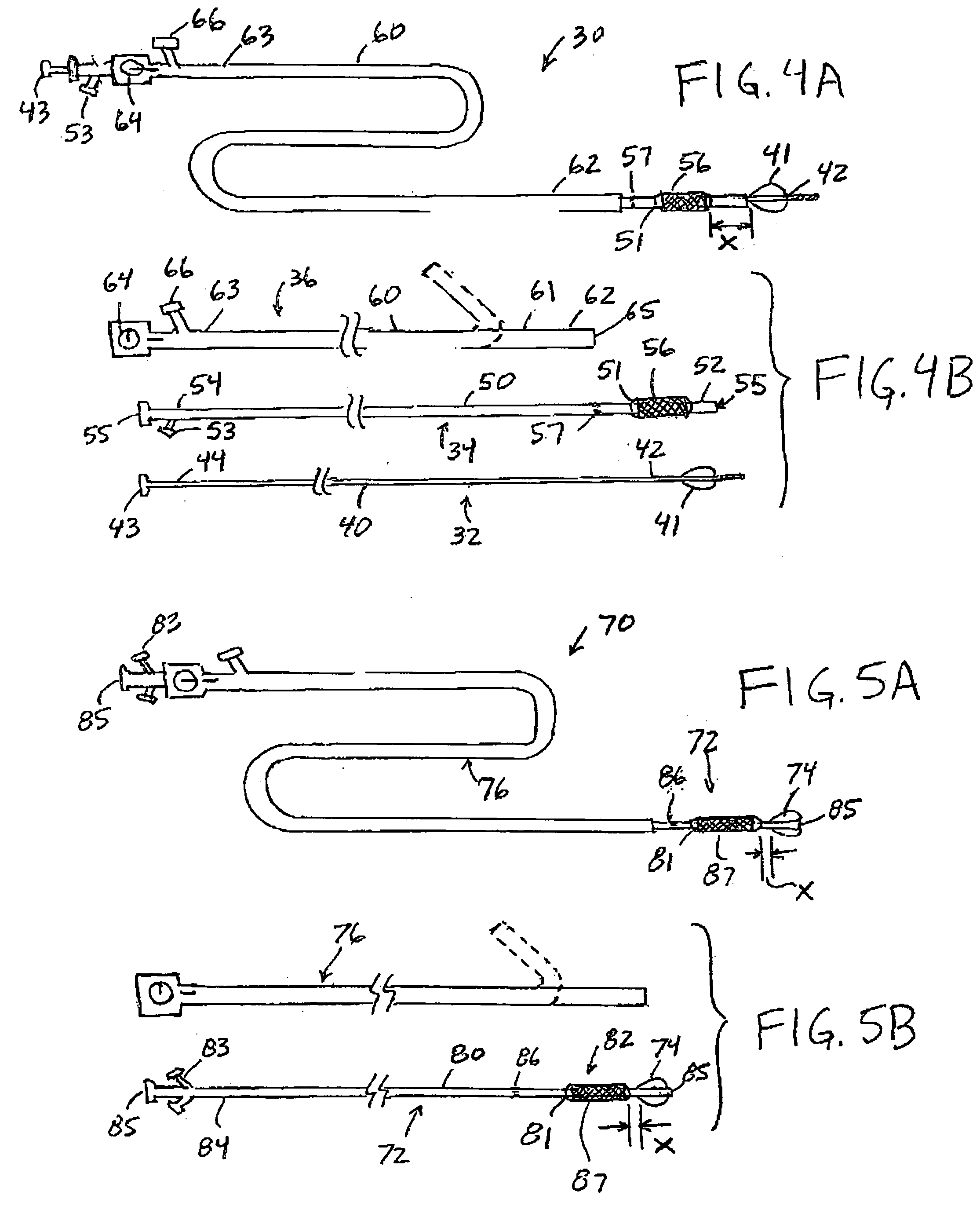Apparatus and methods for renal stenting
a technology of vascular prosthesis and appendix, which is applied in the field of appendix and methods for delivering vascular prosthesis, can solve the problems of virtually impossible re-access to the vessel, no of the foregoing previously-known emboli protection system performs reliably, and the access and deployment of previously-known stents are difficult, so as to reduce the risk of balloon perforation or jailing, and reduce the effect of disl
- Summary
- Abstract
- Description
- Claims
- Application Information
AI Technical Summary
Benefits of technology
Problems solved by technology
Method used
Image
Examples
Embodiment Construction
[0038] The present invention is directed to apparatus and methods for treating renal artery disease, and in particular, for removing obstructions of the renal arteries with reduced risk of embolization. Due to the relatively short length of the renal arteries, renal stenting to address obstruction is performed by only a relatively few interventional clinicians, each of whom has acquired extraordinary skill gained from extensive experience in this area. The numerous technical challenges posed by such stenting in view of previously-known apparatus and methods has limited widespread adoption of this treatment. The present invention addresses these issues by providing specialized apparatus for use in renal artery stenting.
[0039] Referring to FIG. 1, the anatomy of the human renal artery RA is depicted. The artery generally branches at a descending angle from the abdominal aorta AA, thus making access to the vessel difficult from below via the femoral arteries. The length of the artery ...
PUM
 Login to View More
Login to View More Abstract
Description
Claims
Application Information
 Login to View More
Login to View More - R&D
- Intellectual Property
- Life Sciences
- Materials
- Tech Scout
- Unparalleled Data Quality
- Higher Quality Content
- 60% Fewer Hallucinations
Browse by: Latest US Patents, China's latest patents, Technical Efficacy Thesaurus, Application Domain, Technology Topic, Popular Technical Reports.
© 2025 PatSnap. All rights reserved.Legal|Privacy policy|Modern Slavery Act Transparency Statement|Sitemap|About US| Contact US: help@patsnap.com



